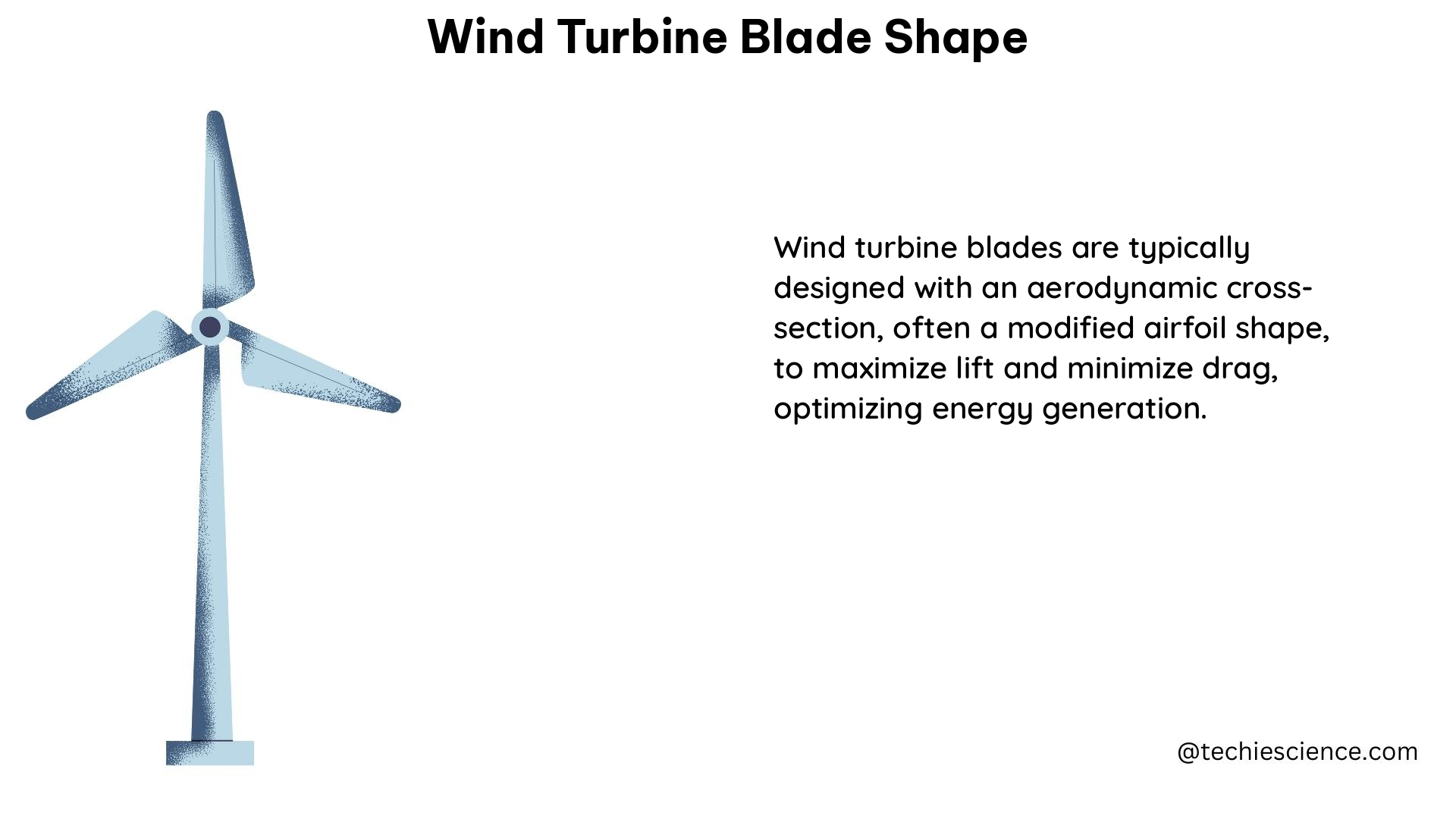Wind turbine blade shape is a critical factor in the performance and efficiency of wind turbines. The shape of the blades can significantly affect the amount of power that can be generated by a wind turbine. In this comprehensive guide, we will delve into the intricate details of wind turbine blade shape, exploring the various parameters that define its design and their impact on the overall performance of the turbine.
Airfoil Design: The Foundation of Blade Shape
The most common blade shape for wind turbines is the airfoil design, which is optimized to maximize lift and minimize drag. The airfoil shape is characterized by a curved upper surface and a flatter lower surface. This curvature, known as camber, is a crucial factor in generating lift, while the flatter lower surface helps to reduce drag.
The airfoil design can be further refined by adjusting the following parameters:
-
Chord Length: The distance between the leading edge and the trailing edge of the blade at a given point. Longer chord lengths can increase the surface area and generate more lift, but they also increase the structural loads on the blade.
-
Camber: The curvature of the upper surface of the blade. Higher camber values can increase lift, but they also increase the risk of stall at higher wind speeds.
-
Thickness: The distance between the upper and lower surfaces of the blade at a given point. Thicker blades can provide more structural integrity, but they also increase drag and reduce the overall efficiency of the turbine.
-
Twist: The angle of the blade relative to the axis of rotation. Twisting the blade can help to optimize the angle of attack along the length of the blade, improving the overall performance of the turbine.
Blade Length: Balancing Power and Structural Integrity

The length of wind turbine blades can vary depending on the size of the turbine, with longer blades typically used for larger turbines. Longer blades can generate more power, as they have a larger swept area and can capture more wind energy. However, longer blades also increase the structural loads on the turbine, which can lead to increased wear and tear and reduced lifespan.
For example, the NREL 5 MW reference wind turbine has a rotor diameter of 126 meters and a blade length of 61.5 meters. This blade length was chosen to balance the power generation potential with the structural integrity of the turbine.
Blade Tip Design: Reducing Noise and Loads
The shape of the blade tip, known as the blade tip, can also affect the performance of the turbine. The blade tip can be straight or curved, with curved tips typically used for larger turbines. Curved blade tips can help to reduce the noise generated by the turbine and can also help to reduce the loads on the turbine.
The NREL 5 MW reference turbine has a curved blade tip, with a tip speed ratio (the ratio of the blade tip speed to the wind speed) of 7.0. This tip speed ratio was chosen to balance the power generation potential with the noise and load reduction benefits of the curved tip design.
Pitch Angle Optimization: Maximizing Lift and Minimizing Drag
The angle of attack of the blades, known as the pitch angle, can also be adjusted to optimize the performance of the turbine. The pitch angle can be adjusted to maximize lift and minimize drag, which can help to increase the amount of power that can be generated.
The NREL 5 MW reference turbine has a pitch angle that can be adjusted between -5 degrees and 35 degrees, depending on the wind conditions and the desired power output.
Quantifying Blade Shape: Key Parameters and Measurements
To fully understand and optimize the shape of wind turbine blades, it is important to consider a range of quantifiable parameters and measurements. These include:
| Parameter | Description | Example Value (NREL 5 MW) |
|---|---|---|
| Chord Length | Distance between leading and trailing edge | Up to 4.5 meters |
| Camber | Curvature of upper surface | Up to 6.5 degrees |
| Thickness | Distance between upper and lower surfaces | Up to 20% of chord length |
| Twist | Angle of blade relative to axis of rotation | Varies along blade length |
| Pitch Angle | Angle of attack relative to wind direction | -5 to 35 degrees |
By understanding and optimizing these key parameters, wind turbine designers can create blade shapes that maximize power generation, minimize structural loads, and reduce noise and vibration, ultimately improving the overall efficiency and performance of the wind turbine.
Conclusion
Wind turbine blade shape is a complex and multifaceted topic, with numerous parameters and design considerations that must be carefully balanced to achieve optimal performance. From the airfoil design to the blade length and tip shape, each aspect of the blade’s geometry plays a crucial role in determining the power output, structural integrity, and environmental impact of the wind turbine.
By delving into the technical details and quantifiable data points presented in this comprehensive guide, wind turbine designers and enthusiasts can gain a deeper understanding of the intricacies of blade shape and leverage this knowledge to develop more efficient and reliable wind energy systems.
Reference:
- Wind Turbine Component Loads for Improved Life Prediction: https://www.sciencedirect.com/science/article/pii/S0960148119309656
- NREL Wind Data and Tools: https://www.nrel.gov/wind/data-tools.html
- CFD-based curved tip shape design for wind turbine blades: https://wes.copernicus.org/articles/7/1471/2022/

The lambdageeks.com Core SME Team is a group of experienced subject matter experts from diverse scientific and technical fields including Physics, Chemistry, Technology,Electronics & Electrical Engineering, Automotive, Mechanical Engineering. Our team collaborates to create high-quality, well-researched articles on a wide range of science and technology topics for the lambdageeks.com website.
All Our Senior SME are having more than 7 Years of experience in the respective fields . They are either Working Industry Professionals or assocaited With different Universities. Refer Our Authors Page to get to know About our Core SMEs.